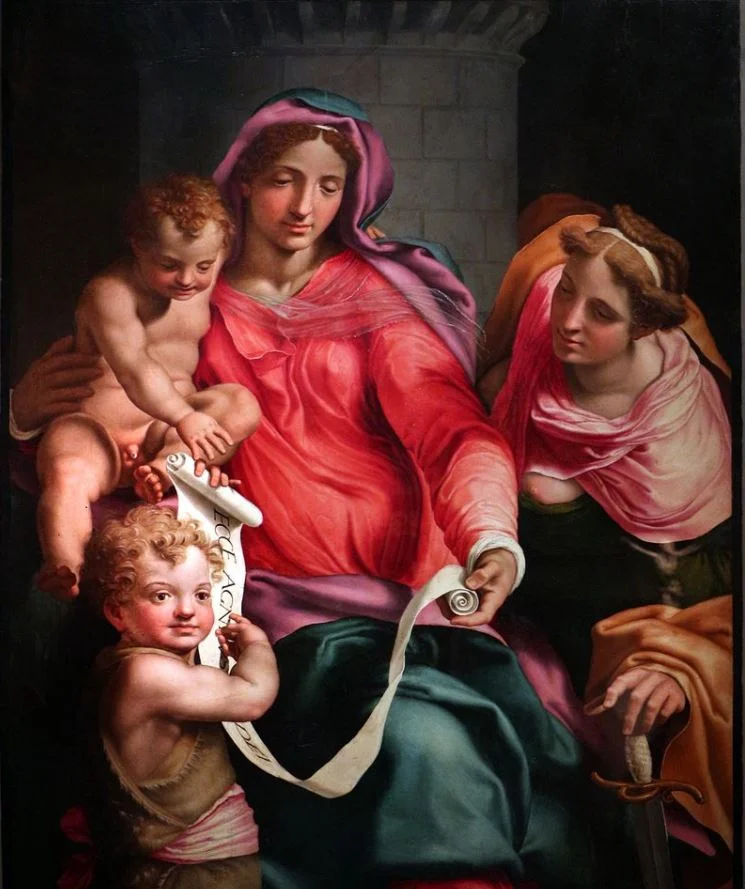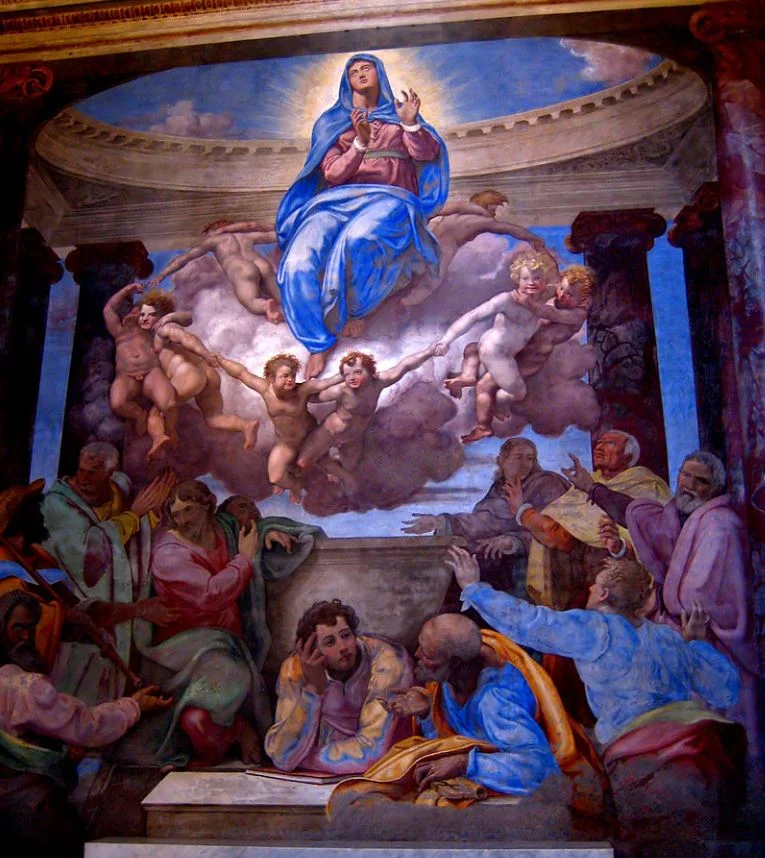Daniele da Volterra (1509-1566) was born as Daniele Ricciarelli in the town of Volterra in the Tuscany region of Italy. He is most famously known for a peculiar job in Rome, namely covering the genitals painted by Michelangelo in his “Last Judgement” on the altar wall of the Sistine Chapel in Vatican City.
Regardless of doing a job that nobody really wanted, the man is considered to be one of the most renowned Mannerist artists of the 16th century, a period that is also known as the “Late Renaissance.”
In this article, you’ll discover some of the most famous Daniele da Volterra Paintings so you’ll understand that he wasn’t merely “Il Braghettone” (“the breeches maker”) who covered up Michelangelo’s job.
1. Massacre of the Innocents
- Date created: 1557
- Dimensions: 51 x 42 centimeters (20 x 16.5 inches)
- Location: Uffizi Gallery, Florence, Italy
The Massacre of the Innocents is a popular theme that has been depicted frequently in art history. It’s a special painting in the artist’s oeuvre because it was created for the San Pietro in Selci church in Volterra, his hometown.
What makes this painting remarkable is that he created it during his last visit to his place of birth. His friends had asked him to leave a memory of him behind and this was the result.

2. Elijah in the Desert
- Date created: 1543-1547
- Dimensions: 81 x 115 centimeters (31.88 x 45.27 inches)
- Location: Uffizi Gallery, Florence, Italy
Elijah in the Desert depicts the prophet Elijah as he is contemplating the bread that was brought to him by a raven. In Christianity, this is considered to be an omen for the upcoming Last Supper.
It’s one of many works of the artists which clearly shows the influence that his idol, Michelangelo Buonarroti, had on the man. This can especially be seen in Elijah’s muscular body of which an abundance can be found in Michelangelo’s Last Judgement.

3. Madonna and Child with the Infant St John the Baptist and Saint Barbara
- Date created: 1548
- Dimensions: 96.7 × 75.6 centimeters (38.07 × 29.76 inches)
- Location: Uffizi Gallery, Florence, Italy
As the name of this painting suggest, we can see the Virgin Mary who is accompanied by the baby Jesus and the Infant Saint John the Baptist, as well as Saint Barbara. The painting is a distinctive Mannerist work as de Volterra used extremely bright colors.
The work has in private hands for nearly 5 centuries and was still in the possession of the artist’s descendants until the year 1772, the year it was acquired by the Pannocchieschi counts of Elci. It was only acquired by the Uffizi Gallery in 2019.

4. Descent from the Cross
- Date created: 1545
- Location: Orsini Chapel, Trinità dei Monti Church, Rome, Italy

The Descent from the Cross is considered to be the most famous of all paintings created by Daniele de Volterra. At one point, it was even named as one of the best paintings in Rome together with Raphael’s Transfiguration, and that means quite a lot.
The painting is located in the iconic Trinità dei Monti Church which is situated on top of the hill that can be accessed via the famous Spanish Steps. It was based on drawings made by Michelangelo.

5. Assumption of the Virgin
- Date created: 1555
- Location: Trinità dei Monti Church, Rome, Italy
The Assumption of the Virgin is another painting located inside the Trinità dei Monti Church. This fresco decorates the tomb chapel of a powerful woman named Lucrezia della Rovere.
The imagery of the painting was chosen by the woman itself and depicts various phases of life and the eventual heavenly reward. The frescoes on the wall make use of the so-called “Trompe L’oeil.” One of the examples is the Apostles in the foreground who appear to be leaning on the real altar inside the chapel.

6. Portrait of Michelangelo
- Date created: 1545
- Dimensions: 88.3 x 64.1 centimeters (34.76 x 25.23 inches)
- Location: MET Museum, New York City, United States
The Portrait of Michelangelo is an unfinished work that depicts an aging artist and was created at the time he was about 70 years old. He would go on to live nearly an additional 2 decades and create multiple works of art during his final years.
This work emphasizes the close relationship between the old master and one of his most fervent admirers. They collaborated on multiple occasions and de Volterra happily took on the undesirable job in the Sistine Chapel, regardless of the fact that it earned him a mocking nickname.

